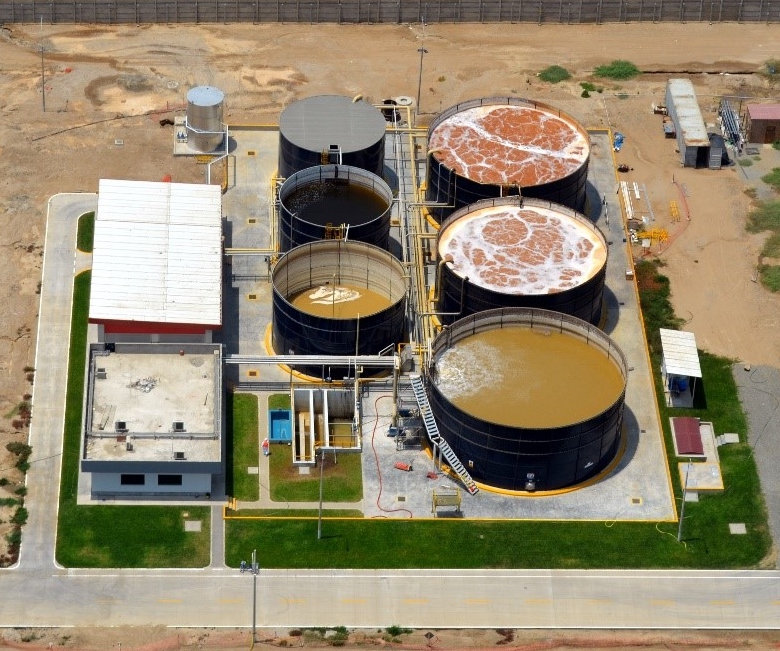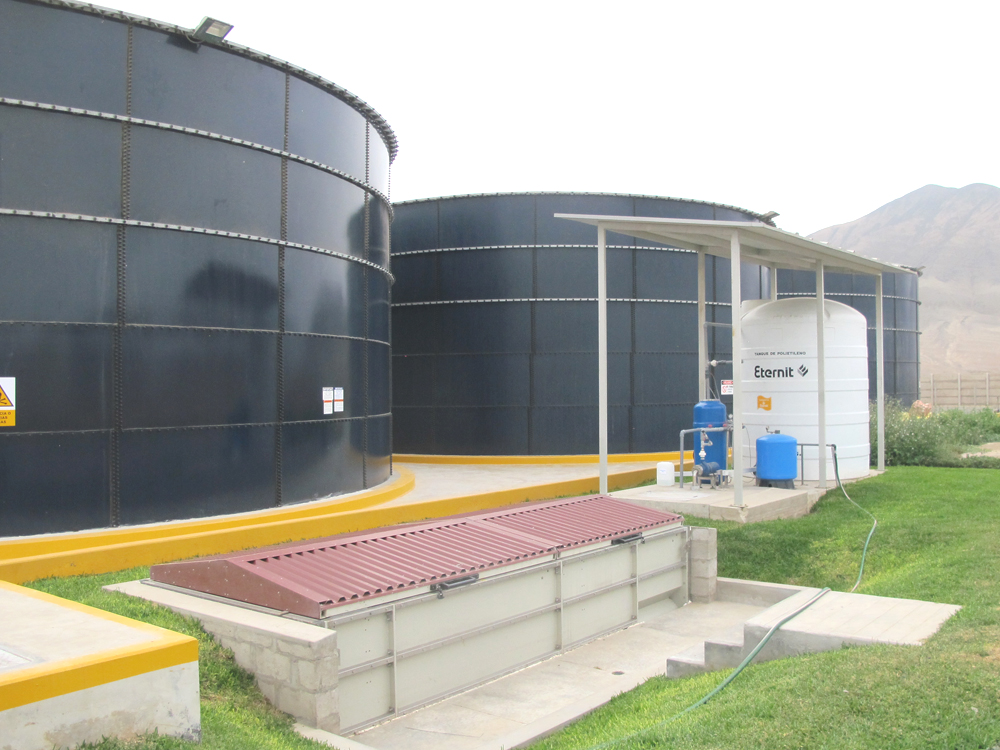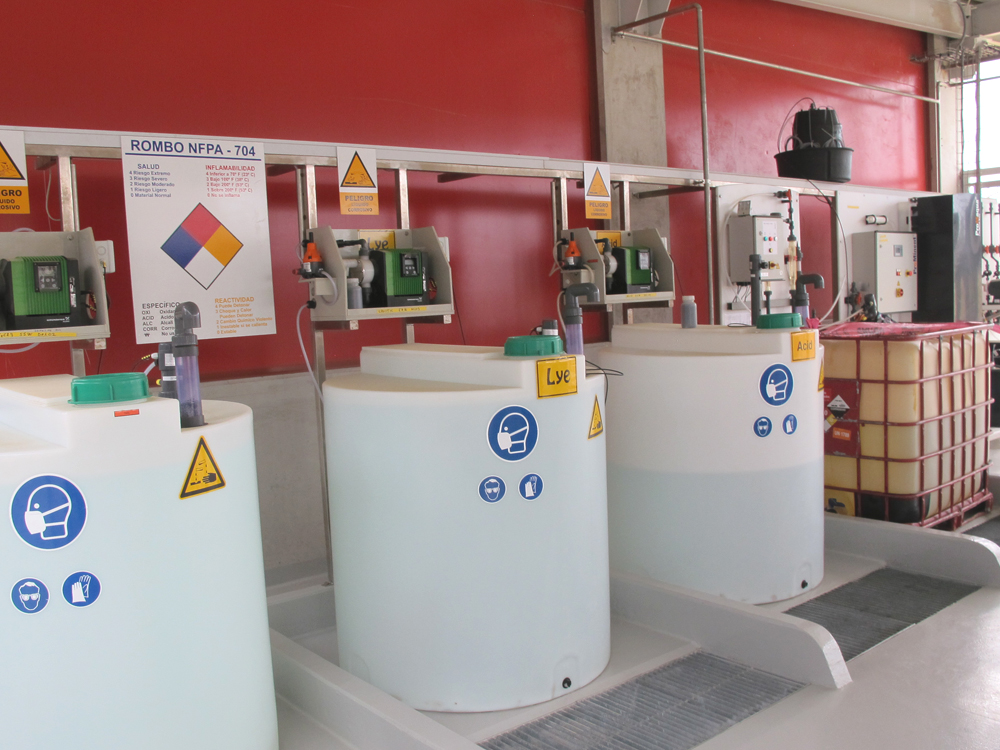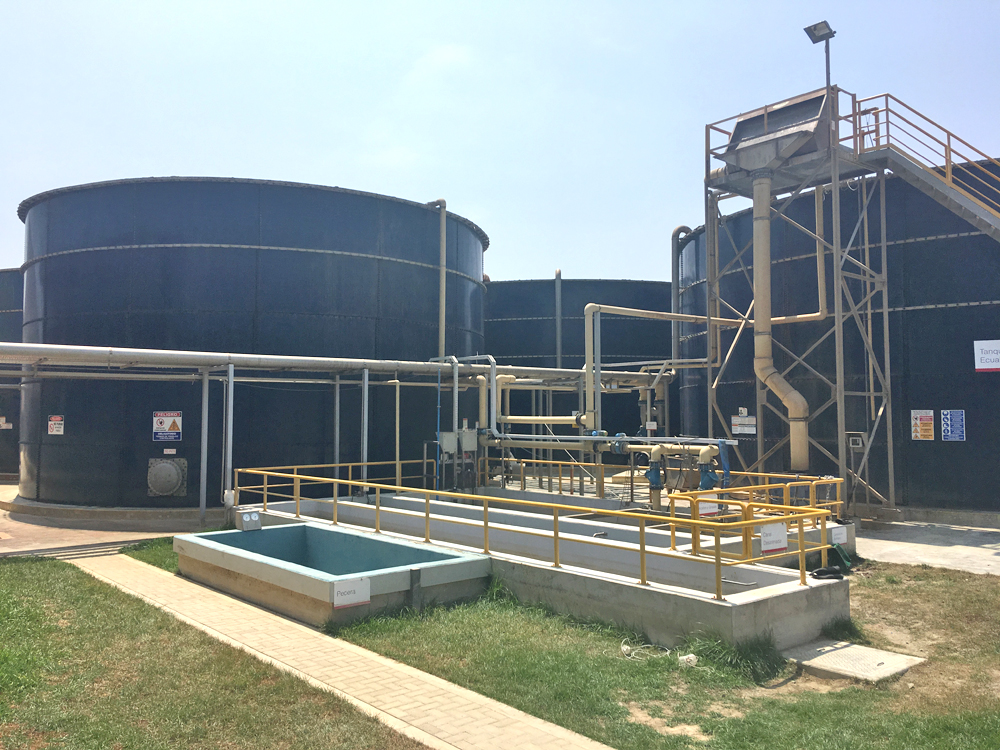Wastewater recycling of a softdrink bottling plant
Combination of SBR and MBR technology
In cooperation with our parent company Chriwa, a wastewater recycling plant was designed for a soft drink producer in Peru. By using the treated wastewater for irrigation, toilet flushing and as washing water for the vehicle fleet, approximately 960m³ of water is saved every day.

NUMBERS & FACTS:
• Location: Region Lima, Peru
• Hydraulic plant capacity: 1.400 m³/d
• Order: 2012
CONCEPTUAL FORMULATION:
CUSS designed a wastewater treatment system for a South American soft drink producer. The client required that part of the wastewater (approx. 960m³/d) is reused. To ensure safe reuse, the project was realized in cooperation with our sister company Chriwa, which is specialized in drinking water technology. In addition to the wastewater from the production, the black water produced on site is also treated.
After the removal of abrasive substances, neutralization, and equalization of the wastewater two parallel SBR reactors were installed. About 40 m³/h are then further treated and recycled. The remaining clearwater is discharged. To ensure a safe reuse of the cleaned wastewater gravel filters, activated carbon filters and a nanofiltration are installed.
The black water produced on the site is treated separately by an MBBR (Moving Bed Biofilm Reactor) plant and a gravel filter.
Since the plant was commissioned, the wastewater volume has increased to approximately 2,000m³/d. This made it necessary to expand the plant and an additional membrane bioreactor was installed. In order to handle the future wastewater volume of up to 2,880 m³/d, it is possible to convert the existing SBRs into membrane bioreactors. This will increase the purification capacity due to the increasing biomass load in the reactor. In addition to upgrading the wastewater treatment, it is possible to use the clear water as rinsing water during production by installing a RO filtration. This would further reduce the plant's water demand. CUSS and Chriwa are currently working on the realization of these steps.
CHALLENGES:
- High requirements for clear water quality
- Water recycling
PROCESS STEPS:
- Solids removal by sieving
- Homogenisation and neutralisation
- SBR
- Membrane bioreactor
- Gravel filtration
- Activated carbon filtration
- Nanofiltration
- Sludge stabilization and dewatering




